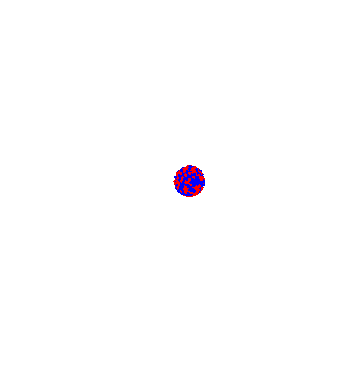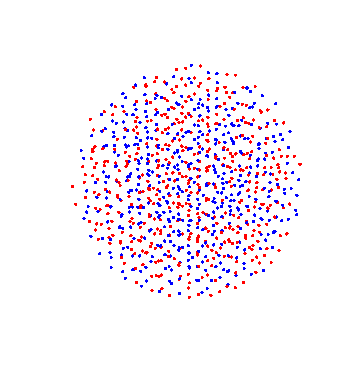We can trace the history of our universe fairly confidently back to decoupling. That being observed to be a state of thermodynamic equilibrium, all previous information was erased. There are however very small deviations from perfect equilibrium and these can be used to infer some prior information. For example Baryon Acoustic Oscillations (BAO) can be inferred from small density variations. However, it seems strange to continue back to t=0 with the same model. The reason is that it leads us to a singularity of infinite density and temperature. As David Hilbert said, infinity is not to be found in nature. This singularity created all the matter in the universe instantly in the most egregious violation imaginable of the conservation of energy. What if instead it took a reasonable, finite amount of time to create? Then whatever that duration, a nanosecond, seven days or a thousand years, the amount of matter would have increased from zero to its present value during that interval. At some point, depending on the creation profile, ionization, nucleosynthesis, etc., would have occurred giving the correct element abundances, then ultimately decoupling and the CMB. It makes more sense that the creation event took a finite amount of time like all other creation processes in the universe. Also if matter and antimatter repel gravitationally – as argued in my paper, it would have time to separate, explaining baryon asymmetry with beyond-the-horizon antimatter. This also explains how energy is conserved and is obtained from nothingness: the final state, now, is also a zero energy state, nothingness being unstable. This is a “free lunch” scenario.

If matter and antimatter repel each other, then they would have opposite metric signatures according to the calculations in my paper. Imagine an initial state of the universe where there were matter and antimatter in equal amounts and completely interspersed with each other. This model approximates it with a spherical arrangement. Regions of matter or antimatter are interspersed randomly in equal amounts. Since their metric signatures are opposite the total metric would be 0 (They can simply be added since for these small metrics the curvature is linear in the metric). This would mean no space and no time and zero energy. However this would be a highly unstable configuration. A tiny perturbation would set this off as shown in this animation of a simulation that performs actual gravitational field calculations at each instant to show how this evolves. What happens is that each specie attracts its own while repelling the other. At first each specie collapses in on itself creating high temperatures and pressures. Then the huge amount of negative and positive energy released leaves each specie with a large kinetic energy so an expanding matter universe is created and similarly an antimatter universe, segregated from each other by their repulsion.

At the right is the same data continuously rescaled for more detail. Given a spherical geometry due to symmetry the matter universe would be surrounded by an antimatter universe that would be beyond the observational horizon. From the antimatter universe’s perspective the same is true – it would be surrounded by the matter universe beyond its horizon. This would be viewed as perfectly symmetric if shown occurring on the 3-D surface of a 4-D sphere, a common geometry used in cosmology. As the separation proceeds, space and time are created. The matter created is “pure matter” a.k.a. Dark Matter initially. At some critical density a proportion would condense to elementary particles after which nuclear processes should occur. This critical density corresponds to the acceleration limit seen at the edges of spiral galaxies, ![]() . This model solves the missing antimatter problem know as “baryon asymmetry”. Also even though the geometry is spherical, since half the matter is negative energy, the universe is overall spatially flat. This solves the “flatness problem”. Since originally there was no space and no time, this happens everywhere at once solving the “horizon problem”. So there is no need for an “inflation” creation – an largely unsupported hypothetical expansion – tweaked just the right way to solve these problems. This is a much simpler initial condition than the current standard Big Bang theory. Nothingness is then unstable. An infinitely small perturbation happened an infinitely long time ago – so to speak. The creation process may still be ongoing today, in the guise of Dark Energy.
. This model solves the missing antimatter problem know as “baryon asymmetry”. Also even though the geometry is spherical, since half the matter is negative energy, the universe is overall spatially flat. This solves the “flatness problem”. Since originally there was no space and no time, this happens everywhere at once solving the “horizon problem”. So there is no need for an “inflation” creation – an largely unsupported hypothetical expansion – tweaked just the right way to solve these problems. This is a much simpler initial condition than the current standard Big Bang theory. Nothingness is then unstable. An infinitely small perturbation happened an infinitely long time ago – so to speak. The creation process may still be ongoing today, in the guise of Dark Energy.
